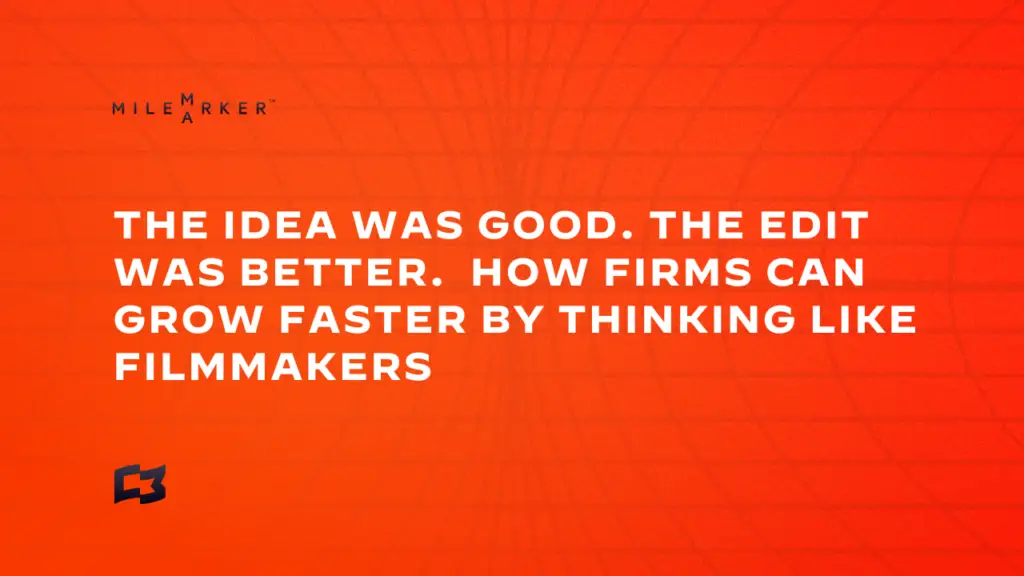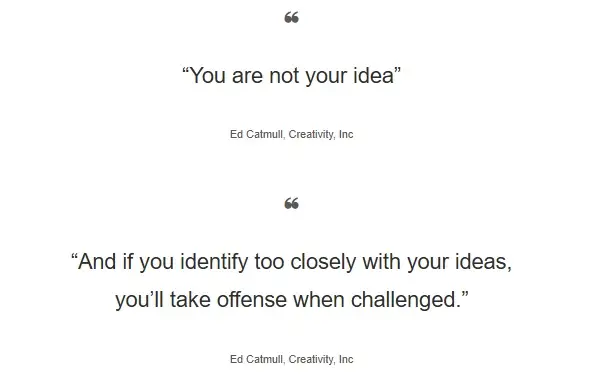Accelerate Wealth Management Growth: Filmmaker-Style Creative Editing

Three years ago, Nate Bargatze was your favorite comedian’s favorite comedian.
Now? He’s selling out arenas and leading the world in comedy tour revenue.
No cursing. No politics. Just slow-burn, dad-energy storytelling that somehow makes Costco feel like Carnegie Hall.
His Amazon special broke streaming records.
His podcast built a clean comedy empire.
His book Big Dumb Eyes became a bestseller.
Oh—and he’s hosting the 2025 Emmys.
In the midst of his climb, Bargatze was invited to host SNL. His Sketch, Washington’s Dream, is noted as the top sketch in SNL Season 49.
This sketch, crafted by the team at SNL, served as a breakthrough performance that introduced Bargatze to a global audience, and within weeks, he seemed to be absolutely everywhere.
I would have loved to hear the initial pitch of this sketch idea. All week, the writers, cast members, and hosts work on material that may or may not be featured on Saturday night. They are idea machines, trying to convince each other (and ultimately Lorne Michaels) that their ideas are worth airtime. Countless sketches don’t make it past a writer’s room or dress rehearsal, which were excellent, hilarious ideas, and some that make it through that don’t really wind up working when the show goes live.
From Sketch to Scratched
In the course of creating a firm (whether it’s an RIA, wealthtech, or something in between), we are constantly evaluating.
Great teams become idea factories—overflowing with new concepts, integrations, branding pivots, growth plays. It’s exciting…until the creative process gets messy.
Too many ideas without discipline? That’s chaos.
Too few voices with influence? That leads to stagnation.
Many wealth management firms default to one of two extremes:
– Founder knows best: where only the top dog’s ideas count, and when the top dog stops ideating, everything stalls. Innovative people hit the road, and culture falls apart. If Lorne led the SNL cast this way, the show would have never made it out of the 70s.
– Free-for-all: where everyone’s suggestions stack up in a never-ending Trello board, and a million ideas lead to nothing landing. It helps SNL to have an absolute deadline every Saturday night to ship something out the door live, but if they didn’t have a secure time slot and a process for approving what goes live, the idea machine might devour them.
In either scenario, something critical is missing: creative refinement.
What Hollywood Knows That Many Advisors Don’t
In the world of sketch comedy, film, or animation, ideas are expected to be flawed at first. The first version is never the final version.
Great work is shaped, not just imagined.
Take Pixar.
Ed Catmull, co-founder of Pixar, revealed in his book Creativity, Inc. that every film at Pixar sucks at first. Every one.
So how do they go from sucks to stunning?
They built something called the Braintrust—a group of peers who gather regularly to give candid, constructive feedback. No egos. No hierarchy. Just truth and improvement.

That sentence should be printed on every advisor’s office wall.
Strengths to Staples
The best wealth management firms operate more like creative studios than static corporations. They:
– Encourage team feedback without diluting accountability.
– Test new ideas without being emotionally attached to them.
– Get to the heart of what’s working—and aren’t afraid to cut what isn’t.
Whether you’re refining your onboarding, rewriting your value proposition, or reworking your data strategy, the same rule applies:
Iteration is not failure. It’s how excellence happens.
What This Looks Like in Real Life
Here’s what this mindset could look like inside your firm:
– You thought your CRM flow was fine. Then your client service team suggested a new branching logic that saved hours per week. Now it’s a new standard.
– You had a newsletter going out monthly. But someone asked, “Do our clients even want this?” Now, you’re segmenting by persona and seeing more opens than ever.
– You launched a new planning process. The first version was clunky, but you had a Braintrust of internal stakeholders who weren’t afraid to say, “Cut that part.” Now it flows—and clients love it.
The Final Cut
It’s easy to confuse activity with progress. But in truth, clarity comes from editing.
Your firm doesn’t need more noise. It needs a better structure. Better rhythm. Better cuts.
So build your Braintrust. Invite honest feedback. Let ideas live. And then, if needed…
Let them die.
Because the idea was good.
But the edit?
The edit made it great.
